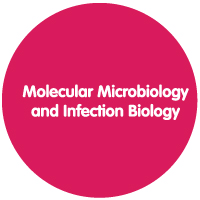
 | | Mechanisms of Gene ExpressionCoordinator
Isabel Sá Nogueira Objectives
• To familiarize students with the diversity of mechanisms responsible for regulating the expression of genetic information at the level transcription and post-transcription mechanisms;
• To offer study of selected topics at the cutting edge of knowledge on microbial gene expression;
• To teach critical analysis of original experimental data;
• To discuss the design of experiments;
• To justify any conclusions that can be drawn from experimental data. Syllabus
How does an individual cell specify which of its many thousands of genes to express? In this course we will address this question by illustrating both transcriptional and post-transcriptional mechanisms of gene regulation in prokaryotic and eukaryotic model microorganisms, such as, Escherichia coli, Bacillus subtilis and Saccharomyces
cerevisiae.
Teaching will focus on new discoveries on microbial gene expression and its regulation. Topics include: DNA sequence and chromatin structure; RNA polymerases, structure, assembly and function; promoter recognition and initiation of transcription; elongation and termination of transcripts; structure of promoters and roles of sigma factors and transcription factors; basic mechanisms of gene activation, repression and attenuation; global regulatory mechanisms; catabolite repression; signal integration and combinatory control; the role of chromatin in
gene regulation; silencing in subtelomeric regions; regulatory RNAs. Evaluation
Each student is required to present one paper near the end of the course. Students will be evaluated, as presenters, by their capacity to lead a discussion about the strengths and weaknesses of the work and paths for future work. In addition the participation in discussions during the lectures will also be evaluated. |
back to Molecular Microbiology and Infection Biology Units





